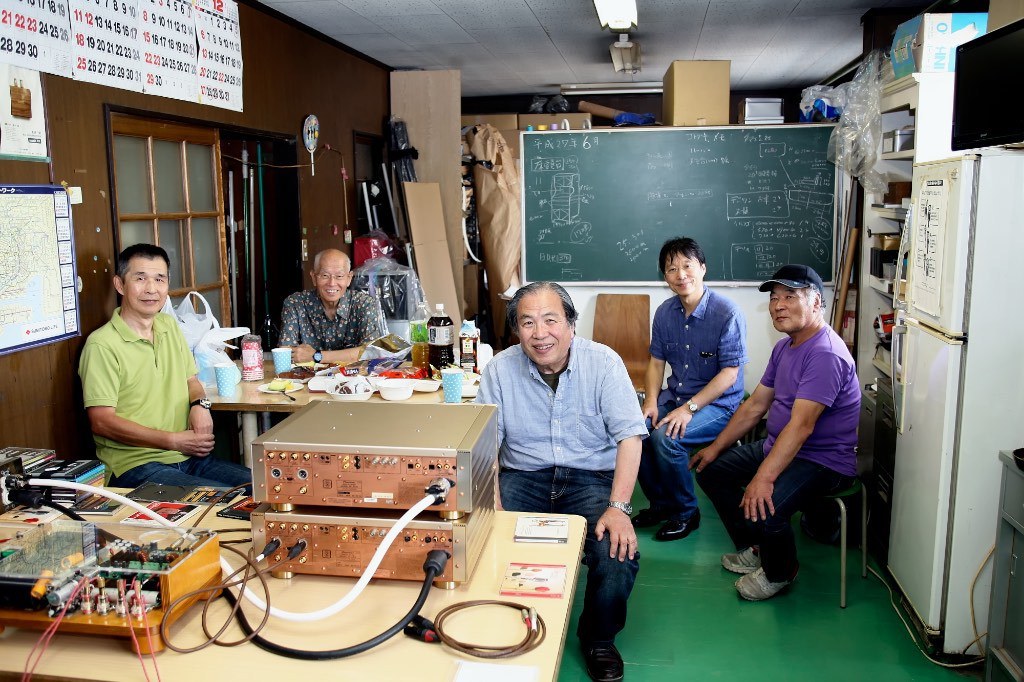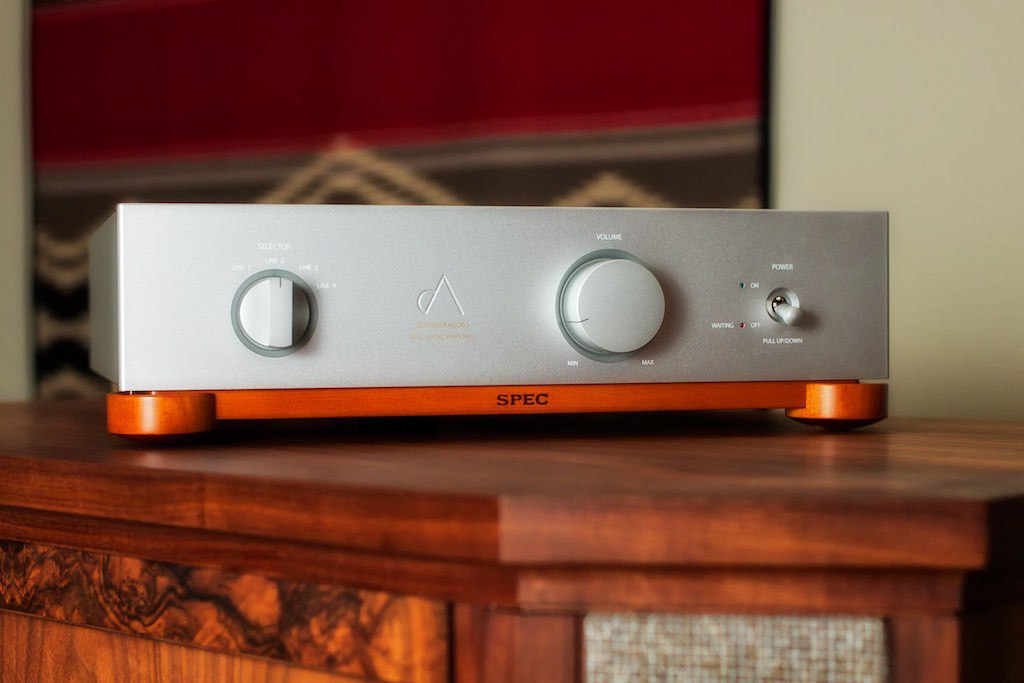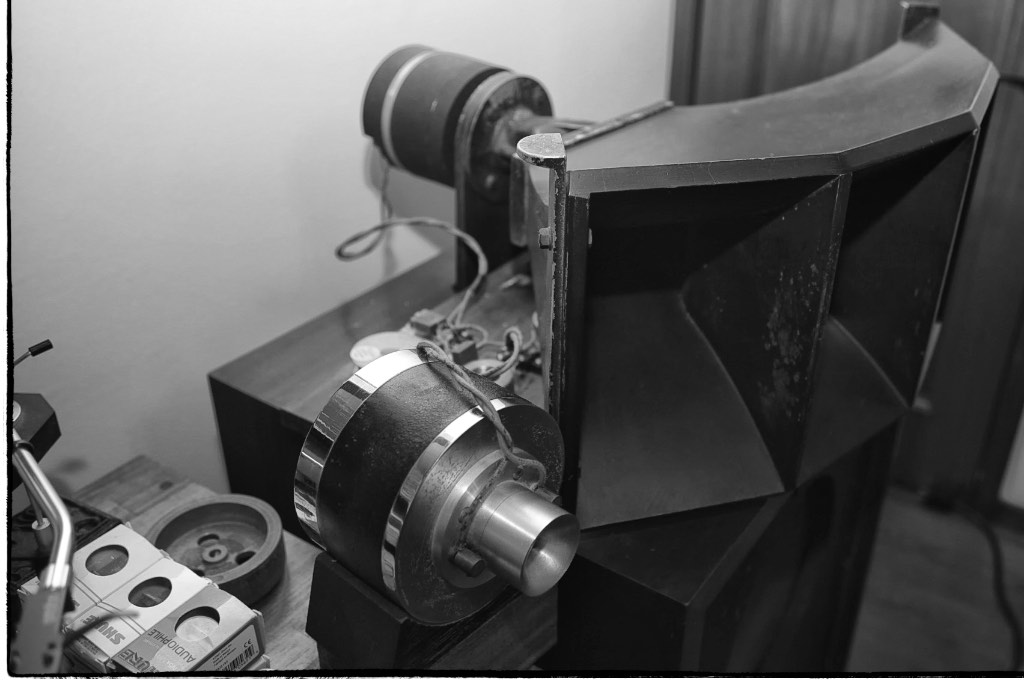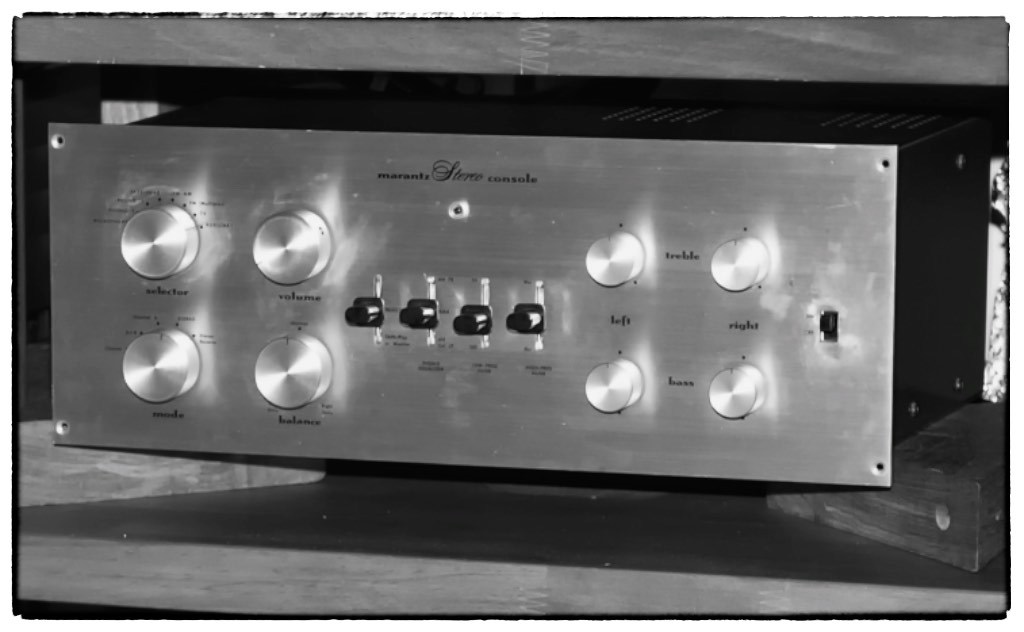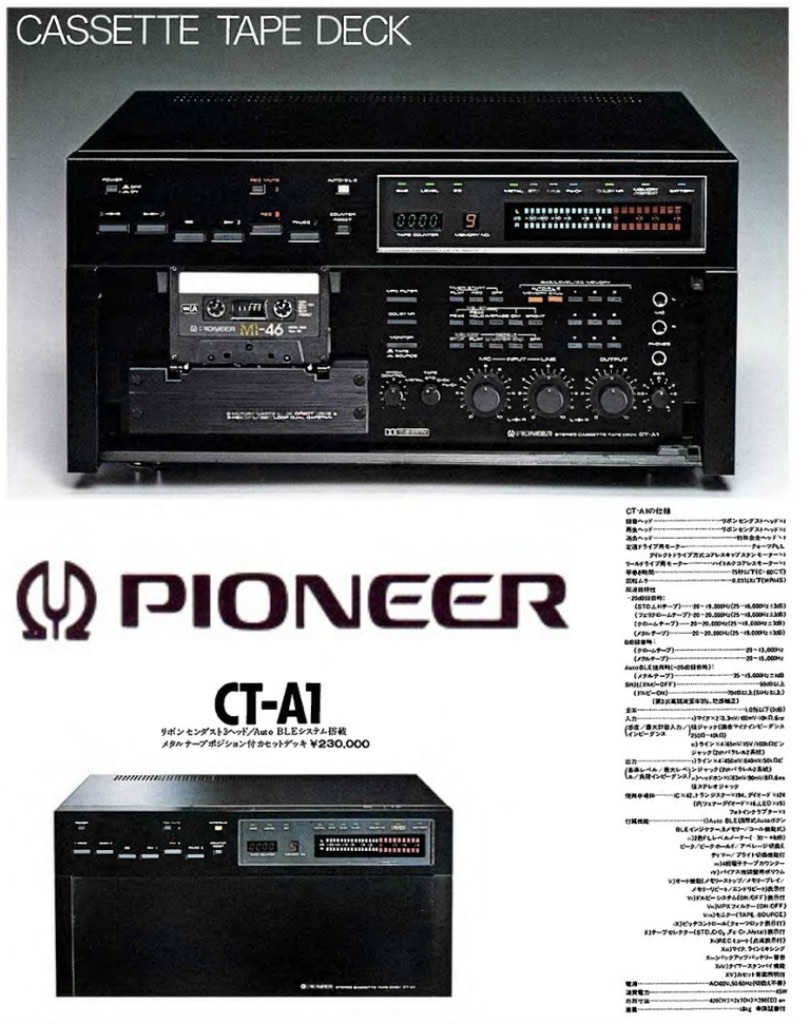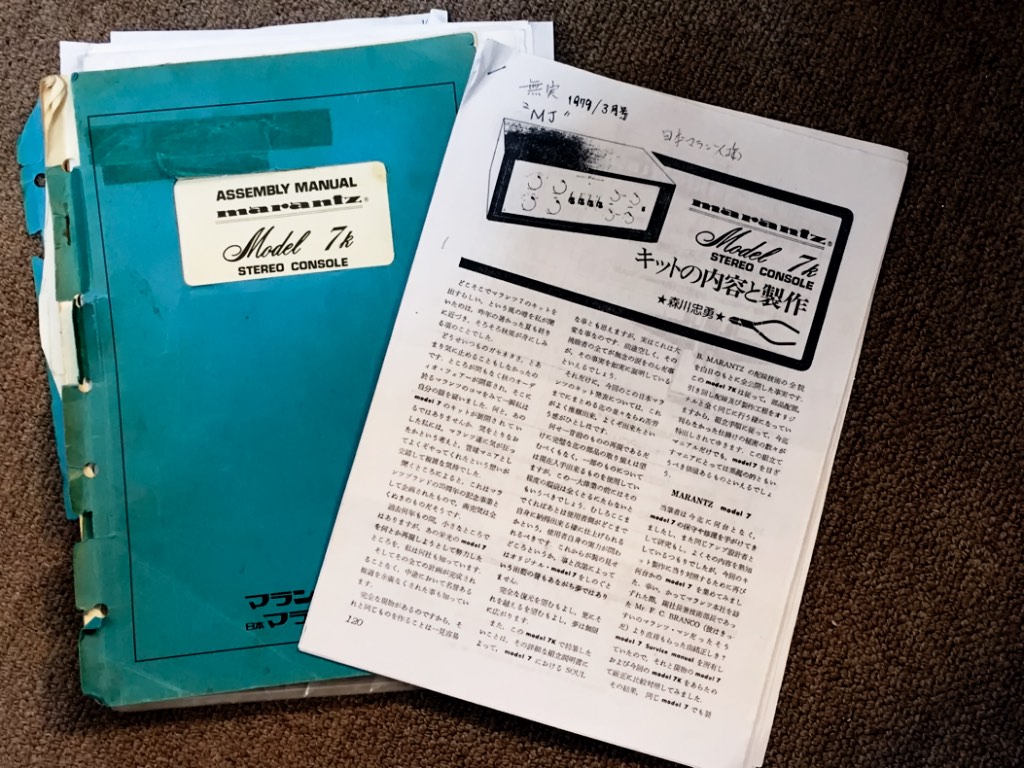As I alluded to in my earlier blog post, while I was traveling in Eastern Europe over the last few weeks, I received a message from Mr. Shirokazu Yazaki in Tokyo, Japan, about an article he has been working on for some time now for the readers of Jeff's Place, and one that I was very excited to read and tell you about!
Those of you who are regular readers of Jeff's Place are already very familiar with the beloved Yazaki-san, but for those of you who are new to Jeff's Place - there's a lot of you lately - I would like like to do a proper introduction for you to Mr. Shirokazu Yazaki, and the very important influence he has had on me personally, and I believe, the course of hobbyist audio around the world, over the last few years.
Mr. Shirokazu Yazaki first came to my attention during my review of the SPEC RSA-M3 EX Real Sound Amplifier that I wrote about for Positive Feedback, back in early 2015, in Issue 78.
In writing that article about the very nice SPEC RSA-M3 EX Real Sound Amplifier, I became so enchanted by Yazaki-san's life & story, and his approach to audio design, that I wanted to share what I was learning from him with all of you, as I found what he had to say was so interesting & illuminating.
With Yazaki-san and his ideas about Real Sound and how to achieve it, I felt like I was witnessing something new, as well as a revival of something forgotten, which together made for something important under the audio sun.
Yazaki-san's life's story, his considerable insights into the relationship of music-making to audio design, made such a big impression on me and the way I view the world of music reproduction in home audio, that it sparked a series of exciting audio adventures that are still going strong after two years now, and with no end in sight!
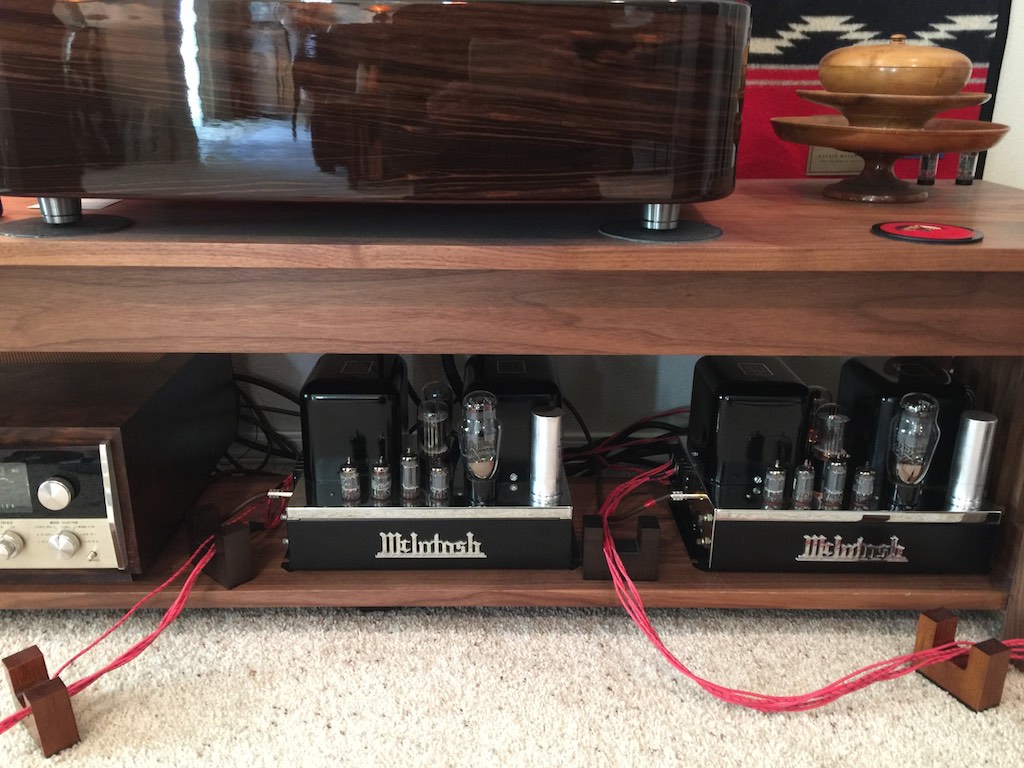
Real Sound modified vintage McIntosh MC30 monaural amplifiers with Western Electric WE16GA as speaker cables.
I described the beginning of my audio adventures with Yazaki-san in Adventures in Real Sound with Mr. Shirokazu Yazaki, in Issue 81 of Positive Feedback, where I shared with you Yazaki-san's concept of Real Sound, and how we pursued Real Sound as we engaged in capacitor & resistor adventures with my vintage McIntosh MC30 monaural amplifiers.
What I learned from Yazaki-san about voicing equipment with capacitors, resistors, and tinned-copper wire for Real Sound was revelatory for me!
Notably, in that article I also discussed Yazaki-san's recommendation of the use of vintage Western Electric WE16GA wire used as speaker cables, and the use of the recording studio classic Belden 8402 microphone cable as interconnects, and how the combination of the musicality & sonics of their Real Sound tinned-copper conductors impressed me so much that I rewired my whole audio system them.
It would turn out that Yazaki-san's recommendation of the Western Electric & Belden 8402 brought to light the forgotten musicality of the use of tinned-copper conductors in audio, and his recommendation ended up being an audio 'shot that was heard around the world'.
As a result, as listeners around the world began to discover the musical magic of tinned-copper conductors for themselves, a tidal wave of interest developed around their 'vintage tone' that has not abated to this day, and it fundamentally changed the kind of musical & sonic expectations that many of us have when it comes to audio wiring & cabling. As a bonus, these tinned-copper cables were very inexpensive, so many of us could afford to experience & experiment with them!
But I digress a little in my excitement, so let me get back to my introduction of Yazaki-san, with a couple of illustrative excerpts from the introduction of the SPEC RSA-M3 EX Real Sound Amplifier article, to introduce you to Yazaki-san the man, and set the stage for the article he has written for us:
"I have found the story of Mr. Shirokazu Yazaki's audio journey during our conversations to be quite fascinating, and I'm hoping I can relay that sense of intrigue to you, and why I think his story is important.
First of all, Mr. Shirokazu Yazaki has been a successful professional audio designer in Japan for over 40 years, and has been involved in the design of many fine audio components from some of the foremost Japanese electronics companies during that time. Yazaki-san fondly reminisces about a few component design high points he was involved with, like the TEAC A-7300 semi-professional open-reel tape recorder while he was at TEAC, or the Pioneer CT-95 / T-1100S cassette recorder as a design team leader & manager at Pioneer in their cassette recorder engineering department, or the Pioneer DV-AX10 universal disc player as the general manager for the Pioneer DVD engineering department.
Those of you with a detailed historical knowledge of audio will remember the highly regarded TEAC A-7300 reel-to-reel; the Pioneer CT-95 / T-1100S cassette recorder, which was considered superior to even the legendary Nakamichi Dragon; and the Pioneer DV-AX10, which was the world's first true universal disc player capable of playing CD, SACD, DVD and DVD-A with both high audio & video fidelity.
Towards the end of his career at Pioneer, Mr. Shirokazu Yazaki was put in charge of the Pioneer research & development center, where he first came into contact with a prototype class-D switching amplifier in 2006.
Ok let's stop right here for a moment. Now we are going to journey back in time 40 years or so to 1971 when Mr. Shirokazu Yazaki first started his professional audio design career at TEAC, a young man fresh out of the university with a mechanical engineering degree.
There were events occurring during that time that would mark it as one of the defining periods of audio history, which would send ripples of inspiration through time to the future to spark an audio revolution that changed the way that many of us today think about what's possible in high-performance audio.
Over the years as an audio writer, it has been a great pleasure for me to interview a number of eyewitnesses who were involved from the beginning of that important period, like Mr. Shirokazu Yazaki, and to tell the story of how events unfolded, and how those events would come to shape the future of enthusiast audio, including my own enjoyment of music today.
While Japanese audio enthusiasts were familiar with the excellent American vacuum tubes from Western Electric, RCA, GE, etc., they didn't have a lot of access to European and British vacuum tubes until towards the end of 1960s, when a most important event occurred with French audio connoisseur Jean Hiraga (of L'Audiophile fame) starting to import European & UK vacuum tubes to Kobe, Japan.
Magazines like MJ and Radio Engineering were publishing do-it-yourself (DIY) articles about building vacuum tube amplifiers, including some using those 'new' European & UK vacuum tubes from Jean Hiraga, which were embraced by the creative 'underground' audio movement in Japan. There were a lot of really interesting designs taking shape around the vacuum tubes that were available from America, Europe, and the UK, and in particular around the ascension of directly heated single-ended-triode power (SET) amplifiers that were intended for use with high-sensitivity horn loudspeakers.
The Tokyo Audio Fair of 1971 featured a number of those vacuum tube amplifier designs, and notably the combination of DH-SET amplifiers driving high-sensitivity Altec A-5 loudspeakers, which wowed show goers with their superlative music-making ability, including our young Mr. Shirokazu Yazaki who had just started his career at TEAC.
Now the young Mr. Shirokazu Yazaki who went to work at TEAC was also an audio enthusiast & music lover who particularly enjoyed listening to jazz, so in 1971 when Yazaki-san went to the Tokyo Audio Fair he was impressed by the intense musical satisfaction that could be realized by listening to music with DH-SET amplifiers powering high-sensitivity Altec horn loudspeakers.
Excited by the possibilities of that 1971 Tokyo Audio Fair, Mr. Shirokazu Yazaki embarked upon what would become a life-long journey of assembling & refining his personal high-fidelity music system, first by constructing his own DH-SET amplifier, then by building and customizing a Marantz 7 kit preamplifier, and over time developing his Altec & Onken-based horn loudspeakers.
In 1972 Yazaki-san began building his own SET amplifier after reading an article in the June issue of MJ magazine by a Mr. Anzai about building a simple GEC DA30 SET amplifier. Yazaki-san completed that first SET amplifier in early 1973, using the American Western Electric 310A as the driver, a Western Electric 274B as a rectifier, and the English GEC DA30 as outputs (the DA30 is less well known in the West, than say the 300B is, but it is held in extremely high regard by aficionados within the Japanese DH-SET scene, but they are rare and difficult to come by these days).
Mr. Shirokazu Yazaki told me that he has continuously improved his DA30 DH-SET stereo amplifier over the years, and the combination of Western Electric 310A driver, Western Electric 274B rectifier, and GEC DA30 outputs provides the most beautiful tonality he has every heard from an amplifier. Even though they were both capable of putting out 8-9 watts, Yazaki-san told me he selected the GEC DA30 over the Western Electric 300B for his amplifier because it had superior high-frequency response. He also went on to say that the oldest version of the Western Electric 310A, the 'mesh shield' that was produced in the 1930s & 1940s, was critical to getting the best sound. He thought that later versions of the WE 310As sounded rougher & less natural compared to the smooth & natural sounding original 'mesh shield' version. Yazaki-san also told me that the 1940s 'engraved' version of the Western Electric 274B rectifier expressed tonal colors better than all the other rectifiers he had experimented with. Compared to the 'engraved' version of the 1940s WE 274B rectifier, he found the Telefunken GZ34, Philips original GZ34, Mullard GZ37, GZ37 big bottle, RCA5R4GY, Western Electric 422A, etc., while excellent rectifiers, all bleached the tonal color to some extent.
The Western Electric 310A driver, Western Electric 274B rectifier, and the GEC DA30 outputs resulted in a rich midrange, beautiful tone, and a powerful upper bass that combined to give exceptional musicality.
In 1979 when Marantz released the Marantz 7 in kit form, Yazaki-san bought the kit and built it up with better parts. Yazaki-san said he learned a lot about getting good tone modifying his Marantz 7 kit with different components, and he has made continuous improvements to it to the present day.
Mr. Shirokazu Yazaki described to me the sound of the audio system he built as being transparent, beautiful, rich, and dynamic, but most importantly it possessed "real stereoscopic sound full of musicality.""
Ok, that serves as a good point to transition to the article Yazaki-san has written for us, My Adventure with My Old Marantz Model 7k, of which you can read the first installment of below.
¸¸.•*¨*•♫♪¸¸.•*¨*•♫♪¸¸.•*¨*•♫♪
My Adventure with My Old Marantz Model 7k
Dedicated to Saul B Marantz and Sidney Smith for their true masterpiece!
By
Shirokazu Yazaki
I have a story to tell about my personal days with the Marantz Model 7k, that I have enjoyed for nearly 40 years now, and I would like to share it with the readers of Jeff’s Place.
Every time when I recall my audio-life with my Model 7k, I get drawn into a state of retrospection. The Marantz Model 7k preamplifier had just been released as a 25th anniversary project of Marantz at the “Japan Audio Show” in the Autumn of 1978.
When I first heard the news of release of this preamplifier I was working at Pioneer as a professional engineer, where I specialized in designing tape transport mechanisms. Towards the end of 1978 I succeeded in developing a really high-performance dual-capstan cassette tape transport loaded with the latest Quartz Lock Direct-Drive capstan motor, which was a core-less reel motor featuring an Alnico magnet, made by Maxon/Swiss. The wow & flutter performance of this mechanism recorded easily the outstanding level of under 0.03 WTD-RMS. A gigantic cassette tape recorder, the CT-A1, featured this transport mechanism, and it was an exciting time for me when it was released in early 1979.
1979 turned into my most memorable year, when in May of 1979 I married Yumi, and I felt like my true life had just begun.
Those years must be the golden days for the audio hobby and industry in Japan, and I was excited to find the display at the show that showed all of the parts used in Marantz Model 7k. The Marantz Model 7k in kit form was a very appealing product for me, as you might imagine.
By that time in Japan, the Marantz Model 7 had an established reputation as a high quality vintage preamplifier, known not only for the outstanding sound quality of its unique three-stage phono equalizer circuit design, but also for the beautiful and well-designed appearance of its front panel.
At that time I had only imagined what the Marantz Model 7 might sound like, and I was so intrigued by its simple and beautiful front panel design, which had neither too much, nor too little, in the way of features, and I felt like there was some kind of advanced intelligence that was behind its design and appearance.
In those days, I was an eager reader of MJ magazine, and at last I found a valuable article of how to build up the Model 7k written by Morikawa-san, in the March 1979 issue.
Morikawa-san was not only a main writer for MJ at that time, but also the senior writer about tube amplifiers. Actually, he introduced me to the world of the high quality parts made in USA through his articles.
I don’t remember how many times I had read the article and got detailed valuable information about the differences between the original vintage Marantz Model 7 and the 25th Anniversary Marantz Model 7k, and the know-how of building up the kit.
Morikawa-san finished up his article with the impressive words, “After the comparison hearing test between original Marantz Model 7 and the 25th Anniversary Marantz Model 7k, while changing a lot of parts included in the kit to get best performance, I reached the conclusion that it takes a long time for aging of the component parts to get the full performance they are capable of. The sound of the vintage Model 7 has quite simply convincing sound, and the sound leads us to the sensation of another world of musicality, but the sound is different from the brand-new Model 7k. And so it would be meaningless to compare the sound of the newborn Model 7k and the vintage Model 7, I believe. And it would be needed for you to wait patiently for numerous years after building up the Model 7k with the carefully selected parts, before you find for yourself that your 7k might reach the incredible level of the vintage Model 7 at some day in the future.”
I was so encouraged by his words, and I made up my mind to get the Model 7k. I bought the kit on the 8th of December in 1979 at a shop in Akihabara, and now after 37 years have passed, I can fully agree with and understand well the meaning of what Morikawa-san expressed about the optimum selection & aging of components over a long time.
Well, I gleaned a lot of insight from Morikawa-san's MJ article and its photos on how to select the parts for the modification of my Model 7k, and actually I changed the main VR, resistors, and capacitors from the parts attached to the kit to the more desired ones for me. Fortunately enough, on January 27, 1980, I completed the assembly of my Model 7k, and it worked very well.
I remember this time very well because Yumi had to stay in the hospital from early January until March 1980 because of the risk of losing our baby while she was pregnant, but blessedly, our daughter, Atsuko, saw the sun safely in that October. In such circumstances things are etched into your memory, and it was at that same time that my audio life with Model 7k had just started.
When I first listened to the sound of my Marantz Model 7k that I had just finished assembling, I was very impressed by the sound which was full of musicality, especially the comfortable mid-low range with such rich atmosphere. At that moment, I clearly understood that the electrolytic capacitor by Mallory in power supply might mainly bring out this attractive low range.
This was the start of my "Capacitor Adventure ". Back in those days, the capacitors made in Japan had never reached the level of sound quality of those capacitors made in the USA, except for the mica capacitors, and also same thing was true for the tubular types of signal capacitors.
In the middle of the 1990's I upgraded my Model 7k with tubular caps, such as the Black Beauty and TRW (Good-All). I felt the sound of my Model 7k at that time very stable and had rich mid-low range by these tubular capacitors, covered with thermosetting resin.
I actually experienced the true power of my Model 7k when Banno-san’s team, who is now working with me and Spec Corporation, had designed and developed the first universal player, the Pioneer DV-AX10, in my engineering department in 1999.
I used my Model 7k in a well-equipped listening room for tuning up the sound of AX10 for more than half year, where fortunately we could compare it to many types of high-end semiconductor preamplifiers of famous brands, both domestic and overseas, but none of these preamplifiers compared to my Model 7k for its musicality. We couldn't hardly believe it, but only my Model 7k could fully show what the AX10 was capable of. Of course, my modifications to the Model 7k have continued after that, and up to the end of this March.
It was lucky for me to have bought my Model 7k in kit form, because it allowed me to easily change any of the parts for the modification without any constraint. If I had managed to succeed in getting the vintage Model 7, it would have been much more difficult to easily to use or change to new parts for the modifications.
Yes, I could understand well the sentiments of many vintage Model 7 lovers who place importance on having an absolutely original Model 7 because of its fame and virtues as a real treasure, but I believe in the tremendous potential for improving the “Sound-Quality” of the Model 7 due to my many experiences over a long period of time.
When I say “Sound-Quality“ it is a little hard to explain, as what I mean by sound quality depends on my personal hearing sense or the sense for the music itself. In a word, it would be “Real-Sound” for me, but the one thing I can say is that when the sound quality reaches a certain level, we can fully enjoy any kind of music source from all ages and countries, for example, from 1950’s jazz to cutting-edge high-resolution recordings of classic music, and for example, I can hear and enjoy more intimately the attractive smoky voice of Julie London with my Model 7k just now while listening, after performing numerous modifications.
I would like to tell you one more thing about Model 7’s virtue. Marantz said that the phono EQ circuit design was very unique, and the front panel featured sophisticated asymmetrical design, and yes, I fully agree, but I would like to point out the excellence of the structure and the design of the chassis.
The front, top, bottom, two-side and rear plane were made of only thin aluminum plates, divided into four components, instead of using usual rolled steel plate.
This all aluminum chassis provides the necessary strength for the chassis of the preamplifier, but is not so rigid as to be detrimental to musicality as with some modern audio preamplifier designs.
I believe the chassis design of Model 7 is just right from a strength and rigidity standpoint, because I have experienced that too robust a chassis and too rigid of a chassis material for audio gear often leads to an uninviting or 'cardboardy' sound. Some inner dissipation is needed in the chassis' mechanical structure, and also some material for the natural damping of minute vibration of the electric parts is needed for getting a comfortable sound, I think.
The aluminum chassis is also able to allow electromagnetic waves to be transmitted out. If the radiation waves emitted in the circuit cannot get out it is a very negative factor, I think, or if the transformer and the parts cannot dissipate minute vibration into the chassis. I suppose all these factors is what gives such a light and airy sound from the Model 7.
I know I'm repeating myself, but I have long respected the geniuses who created such a marvelous and an outstanding preamplifier in the Marantz Model 7, Saul B Marantz and Sidney Smith.
I strongly believe that my dedication to ongoing modifications throughout the last 37 years are a testament to the immeasurable value of Model 7’s design.
And so I hope, that by sharing my thoughts and modifications with the readers of Jeff’s Place, that I could offer some suggestions or help for Model 7 lovers who want to get out the full potential of this true masterpiece.
¸¸.•*¨*•♫♪¸¸.•*¨*•♫♪¸¸.•*¨*•♫♪
Ok, that's it for now for the first installment of Yazaki-san's article about his life with the Marantz Model 7k preamplifier.
I'd like to offer a huge "Thank you!" to Yazaki-san for sharing with us about his life with the Marantz Model 7k, and his personal thoughts about its legendary performance, as well as his approach and methods for taking it to the next level of performance in Real Sound!
In subsequent posts of Yazaki-san's article, Yazaki-san will be discussing with us his method for implementing modifications, and will go into depth about how he strengthens the power supply, the addition of decoupling, upgrading the coupling capacitors, and upgrading resistors.
As Yazaki-san likes to say, "Please wait for it!".
Stay tuned for more, and until then, may the tone be with you and the music make you happy!




